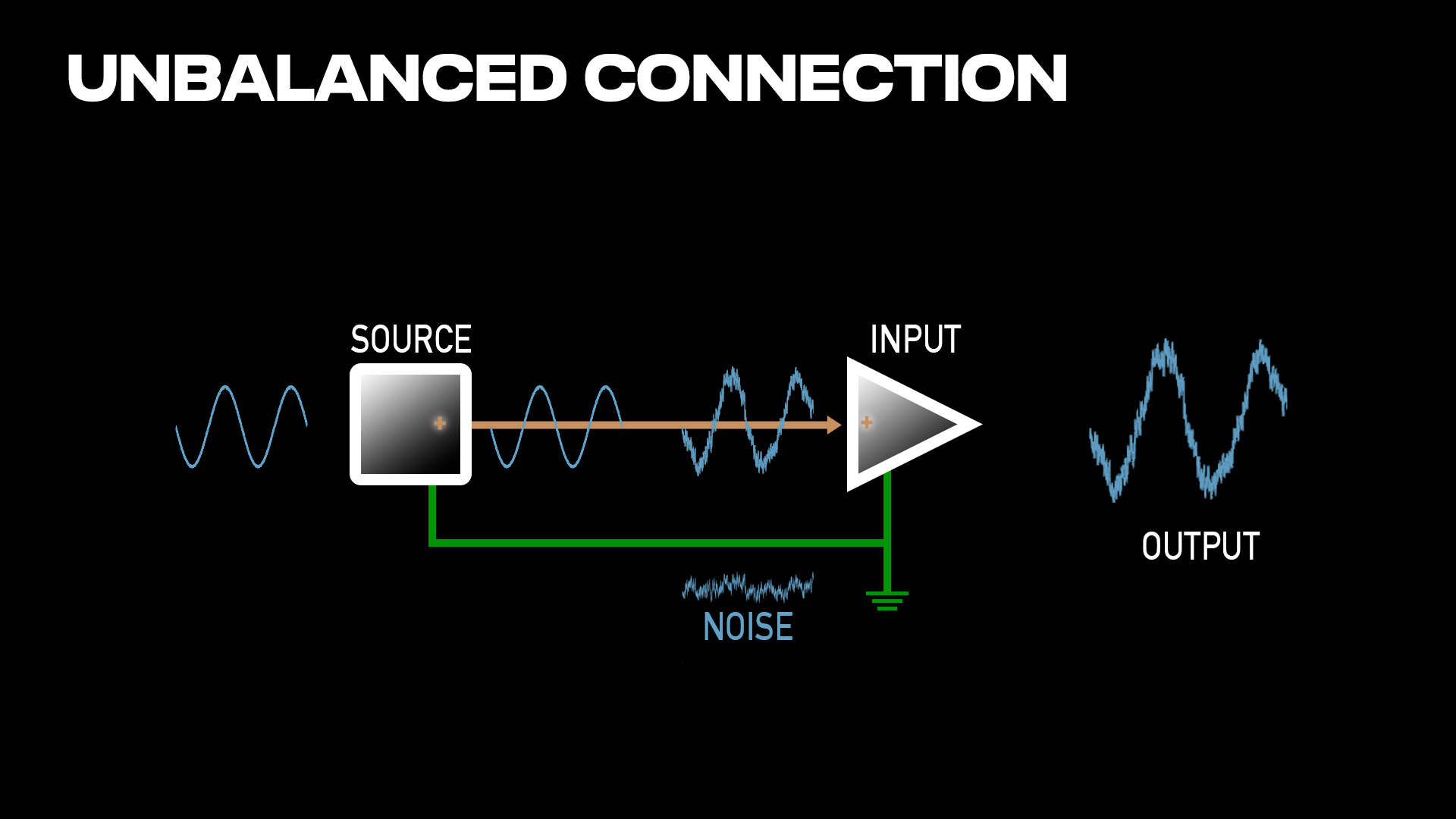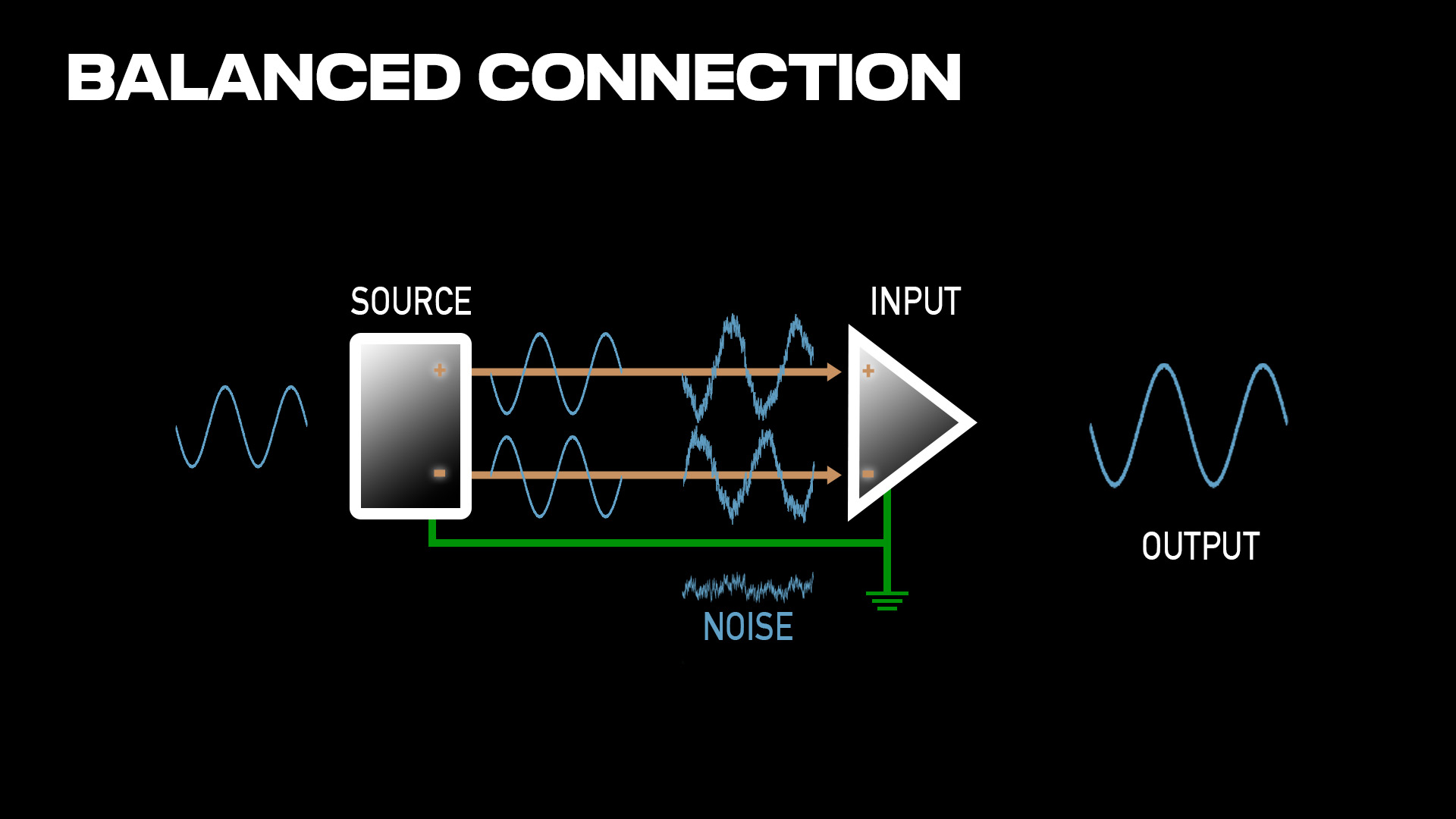Direct boxes (DI's) are an essential tool in my arsenal that I always use when I'm running sound. But I have noticed that not all venues use them. And the issue is, they should be.
Today I'm going to explain when you should use a direct box and how best to use it. At the end, I'll recommend a few of my favorites.
The direct box is a very important device to use, and it can serve a lot of purposes.
Noise Reduction
Audio Isolation (removal of ground loops)
Impedance Matching
Gain Reduction
Noise Reduction
The primary reason to use a DI box is for Noise Reduction. Most instruments have an unbalanced instrument level output.
When unbalanced signals get interference from external noise (noisy power supplies or lights) that audio will pass through to the channel of your mixer with the added noise. We can see that in this image below:

When we take a DI box and add it in line with our instrument, we can almost always remove that added noise completely. This is because the DI box takes an unbalanced signal and makes it a balanced signal to send off to your sound board.
Because of this we will always see a 1/4 inch input and an XLR output on a DI. The balanced audio has a special inverting circuit in the mixer that removes the noise that was injected in that cable.

Whenever I have an instrument connection that is more than 5-10 feet to the mixer, I am reaching for a direct box.
Audio Isolation - Ground Loops
Ground loops are the hum and buzz that you hear when you have a source connected into a different electrical circuit than your sound board. What is happening here is that the ground potential of both the sound board and the keyboard are at different levels which allows voltage to travel where it shouldn’t.
Direct boxes have a ground lift switch which will use the transformer or active circuitry to remove the ground potential between the source and the destination.
If you plug in an audio source and it starts making a buzz, grab a direct box and make sure the ground lift switch is activated. This will 9 times out of 10 remove the buzz.
Impedance Matching
Most electric guitars, bass guitars, and some acoustic guitars will have a pickup inside of the guitar to pick up the sound. These can be piezo or magnetic pickups and they ‘pick up’ the physical vibrations of the instrument or the magnetic field of the strings and turn that into and electric signal which is sent down the instrument cable to your guitar amp or preamp.
These pickups need what is called a ‘high-impedance load’ to function correctly. This is typically going to be above 1M Ω. This is often referred to as a high-z.
When you take a guitar pickup directly into a console, there is going to be an impedance mismatch. This is because the audio console is going to have an input impedance anywhere from 150 – 20,000 Ω. If you were to plug in a guitar directly into this, the pickup will actually change the tonality of the instrument and not function correctly.
This is where direct boxes shine, they have a transformer or active circuitry to balance this impedance match. Because of this match in impedance, the audio going to the console will be clear and true to the instrument.
Gain Reduction
Most direct boxes have a gain reduction switch (or a PAD) that can reduce the gain of the source. Typically you will see a -15dB pad on direct boxes.
If you have a keyboard that has too high of an output for running directly into your console, you can always add a DI box inline to reduce the gain before it hits your console.
Active or Passive?
There are two types of direct boxes, Active and Passive. If you wanted to learn more about the differences, check out this blog post.
It is a good rule of thumb to use a passive DI box when it is an active circuitry instrument, like a keyboard. Keyboards will have gain stages built into the instrument and will yield a higher level signal output. I’m always trying to reduce the number of gain stages in an audio system to keep noise to a minimum.
When the instrument is passive, like a bass guitar, use an active DI box. This is especially true when it is a piezo pickup. This will help load that guitar with the very high impedance that the pickup needs to sound at its best.
DI Recommendations*
*These are affiliate links. The products are the same cost to you, but I receive a small portion of the sale paid from Sweetwater.
Here are a few of my favorite direct boxes I currently use:
Active Direct Boxes:
Rupert Neve RNDI ($$$)
Radial J48 ($$)
Passive Direct Boxes:
Radial JDI ($$$)
Radial ProDI ($$)
When to Use a Direct Box
As a general rule of thumb, whenever you have an unbalanced instrument connection that is more than 5-10 feet to the mixer, use a direct box.
Whenever you have a potential to have a ground loop from an instrument, grab a direct box.
Whenever you are balancing a high impedance instrument (guitar) with a mixer, grab a direct box.
Until next time,
Drew
Whenever you're ready, there are three ways I can help you:
I created a range of Preset Library Downloads that will help your team get professional quality audio without the hassle of starting from scratch. Each product includes .pdfs with full documentation on how to use the preset and why each setting was made.
If you’re looking for a start-to-finish way to get mixing on the Behringer X32, join my X32 Fundamentals Course. In this 6 hour self-paced video course, I’ll guide you through the five fundamentals that will help you go from overwhelmed to confident when mixing on the X32.
For hands on help, schedule an Online Coaching Call with me, personally. Online sessions provide the flexibility to access personalized support while sitting in front of your own equipment and working in real time.